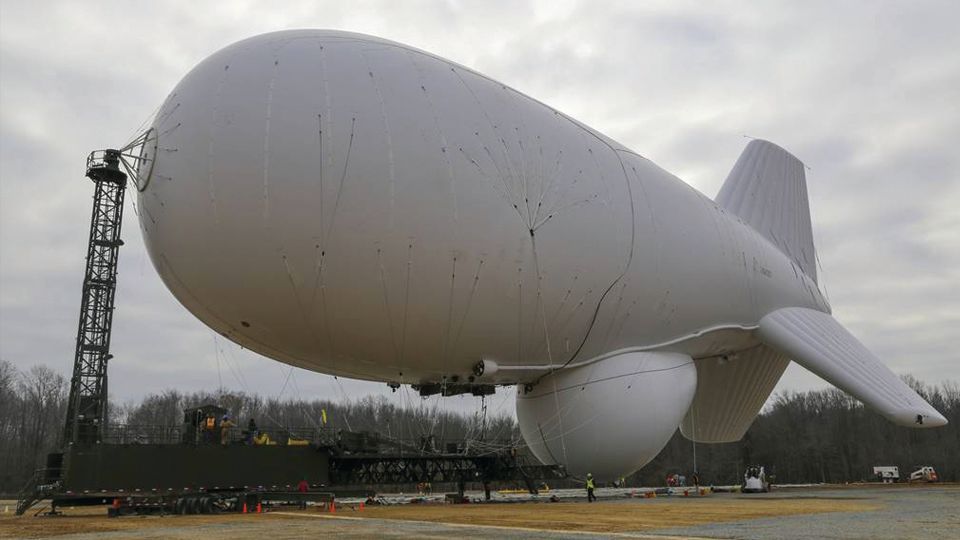Pentagon asks for funds to protect U.S. homeland from cruise missiles

The Pentagon’s plan to defend the U.S. homeland from cruise missiles is starting to take shape after a prolonged period of development because until recently, the threat was perceived as a more distant regional one, a senior Air Force official said.
North American Aerospace Defense Command and U.S. Northern Command have been working for several years and across two presidential administrations to come up with a design that can effectively defend the continental U.S. from cruise missiles, according to Brig. Gen. Paul Murray, NORAD deputy director of operations.
NORAD and NORTHCOM, in consultation with the Missile Defense Agency and the Joint Integrated Air and Missile Defense Organization are closing in on a design framework for the mission, Murray said, just as the Pentagon enters a critical decision-making period as it formulates the fiscal 2024 budget request.
Once the design is created, “it’s time to go out and defend the design,” Murray said at a Center for Strategic and International Studies conference July 14. This translates to conducting modeling and simulation to prove out, in part, that the architecture will work.
It’s also not to say “my computer’s crunching numbers, buy me these capabilities,” he said, adding capabilities need to be demonstrated which includes partnering with the MDA and others to experiment.
Budgets for cruise missile defense of the homeland in fiscal 2022 and 2023 were modest, with combatant commands including NORTHCOM placing additional funding for development in so-called wish lists rather than in base budget requests and hoping that Congress ultimately supplies the dollars.
The cruise missile challenge
Land-attack cruise missiles can be launched from the air, ground or sea and because they fly at low altitudes under powered flight, it is difficult for radars to detect them.
Ballistic missiles can be detected much earlier, which allows more time to detect, track, decide and act. For cruise missiles, decision makers may have only a couple of minutes and salvos of cruise missiles can attack from different directions, complicating the approach to defeating the threat.
While the U.S. has been focused on ballistic missile defense of the homeland from adversaries including North Korea, Russia and China have made investments over several decades to develop cruise missiles capable of carrying out a non-nuclear attack.
The 2019 Missile Defense Review highlighted the need to focus on near-peer cruise missiles and directed the Pentagon to recommend an organization to have acquisition authority of cruise missile defense for the homeland. The designation requirement also appeared in the 2017 National Defense Authorization Act, but the Pentagon has yet to choose what organization will be in charge of the effort.
The lack of an acquisition authority can hamper the budget process. And budget requests during the Trump administration contained little to get moving on cruise missile defense. In President Joe Biden’s first two budgets, the mission also received very little funding save to conduct a cruise missile defense kill chain demonstration.
Previous attempts to figure out how to defend against cruise missiles hit roadblocks.
In 2015, for example, a large aerostat being evaluated for cruise missile defense at Aberdeen Proving Ground in Maryland broke free from its mooring and drifted across Pennsylvania. It’s long tether knocked out power lines and, once it landed in a grove of trees in Amish countryside, had to be shot at by State Troopers to get it to deflate.
The JLENS program was promptly canceled.
The debate over what part of the U.S. is most important to protect from cruise missiles also hindered progress because it was difficult to land on policy to help determine site locations, Peppi DeBiaso, a non-resident senior associate at CSIS, said during a panel discussion at the conference.
Impossible to protect everything
CSIS, in a report it debuted at the conference, said it will be impossible to protect everything. Lt. Gen. A.C. Roper, U.S. NORTHCOM deputy commander, said in a recording played at the event, that “placing a Patriot or a [Terminal High Altitude Area Defense] battery on every street corner is both infeasible and unaffordable.”
Missile Defense Agency fires Patriot missile from THAAD system
The CSIS report lays out a suggested architecture, implementation plan and cost estimate for a cruise missile defense capability to protect the homeland that uses systems already fielded today and leverages sensors and radars already working other jobs to provide early warning and information to aid detection and then decision making in the event of a cruise missile attack.
The design in the CSIS report consists of five layers implemented over three phases. The elements include over-the-horizon radars, towered sensors, an aerostat, three types of interceptors, command-and-control operations centers and a mobile airborne asset, all with a projected acquisition cost of $14.9 billion. Phased operations and sustainment costs are estimated to be $17.8 billion – or $32.7 billion over 20 years.
A study from the Congressional Budget Office in 2021 developed four architectures with 20-year acquisition and sustainment costs estimated between $77 billion and $466 billion. CSIS said the architecture designs from CBO were “hampered by methodological constraints and by element selection, resulting in brittle and expensive solutions.”
The authors of the report acknowledged that “no weapon system is perfect, and perfection is the enemy of the good,” but added, “even if limited and imperfect, a sufficient and affordable defense can complicate adversary planning and strengthen deterrence.”
Vista Rampart and beyond
NORAD and NORTHCOM held a wargame called Vista Rampart in March and April to further refine cruise missile defense concepts. Then NORAD took the design outside of the headquarters to the Globally Integrated War Game, which addressed the capabilities at a broader level with the services and combatant commands.
Other considerations will need to be made, Murray added, to include how to organize, train and equip the defensive systems.
How the architecture would tie into a broader defensive framework with allies and partners such as Canada will require further coordination and analysis. The U.S. and Canada are extensively partnered through a binational command, with capabilities including the North Warning System at the edge of the Arctic designed to detect airborne threats coming from the polar region.
The Pentagon is also keeping a close eye on how the establishment of a missile defense capability on Guam will inform a homeland cruise missile defense capability. The Missile Defense Agency revealed a relatively detailed plan for defending the island against ballistic, hypersonic and cruise missile attacks as well as other airborne threats and funded the initial development and fielding in the coming years to build it.
“I think as we develop a Guam architecture, working with the Army, working with the Navy, working with the joint staff and the services, I think we will learn a lot from that, how we want to operate that integrated kind of defense” Stan Stafira, Missile Defense Agency chief architect, said at the conference. “And then that area is kind of the size of what you’re looking at trying to defend, say, a limited area in CONUS,” he said.
Last fall the Joint Requirements Oversight Council approved an Integrated Air and Missile Defense priority requirements document through a portfolio management review process, Col. Tony Behrens, JIAMDO deputy director, said on the same panel.
“This process will enable a flexible and holistic approach to determining and prioritizing IAMD requirements. It established a priority framework that the combatant commands and Joint Force will help us review annually in developing what we’re calling the Integrated Air Missile Defense portfolio priority list, a holistic approach to the entire IAMD enterprise,” Behrens said.
The list is intended to aid senior decision makers balance budgetary needs and synchronize support across the services and DOD in support of missions like air and cruise missile defense of the homeland, he said.
As the Pentagon looks at cruise missile defense capability “there is a lot of capability out there,” Stafira said, “and all of the services have developed capabilities to defend against cruise missiles.”
Yet as the Defense Department looks at all of these capabilities it is going to need help from industry to answer, “how do you integrate different industry partners’ assets together to do that?”
Thanks for visiting Our Secret House. Create your free account by signing up or log in to continue reading.





